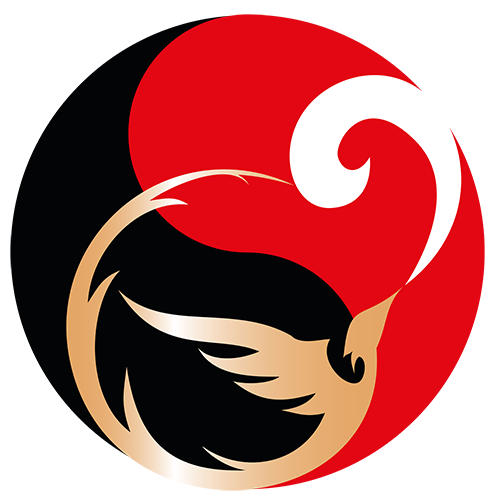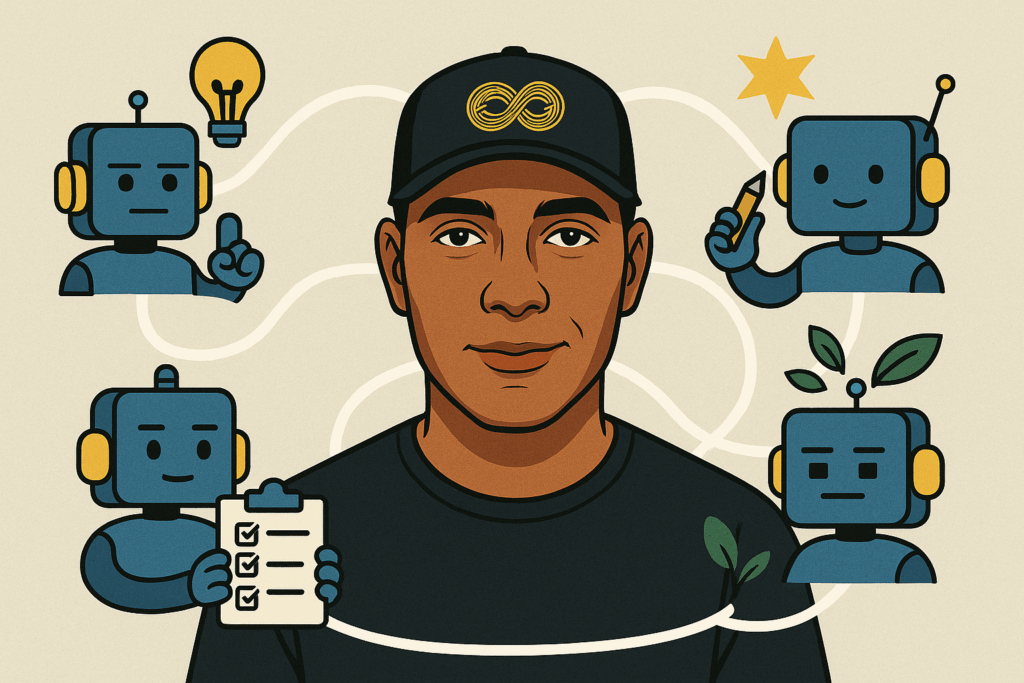Building Your Personal AI Team: The Future of Multi-Project Management
For over fifteen years, I’ve been obsessed with productivity systems. From my early days as a student entrepreneur blogging about time management hacks to building complex workflows for my companies, I’ve experimented with virtually every approach.
But in the last 24 months, everything I knew about managing multiple projects has been fundamentally transformed.
The catalyst? Not another productivity app or methodology—but a complete reimagining of what’s possible with artificial intelligence.
Beyond the AI Hype: A Practical Revolution
When ChatGPT exploded into public consciousness, most productivity experts rushed to publish “AI prompt guides” or tutorials on using specific tools. I took a different approach.
Instead of asking, “How can I use this new tool?” I asked a more fundamental question:
“How would I design my entire work system if I could have specialized collaborators for every type of task?”
This shift in perspective led to what I now call the “Personal AI Team” approach—and the results have been nothing short of transformative:
- Executive time reduced by 70% on low-impact decisions
- Content creation capacity expanded 10x without quality loss
- Software and team costs reduced by 65%
- Meeting time cut by 75%
But the most valuable benefit? The mental space to focus on truly high-value work while maintaining presence and creative energy across multiple projects.
The Personal AI Team: A New Paradigm
The key insight is this: stop thinking about AI as a single tool and start designing a specialized team of AI collaborators, each with distinct roles, personalities, and expertise.
Here’s how my Personal AI Team is structured:
The Executive Advisor
Role: Decision support, strategic planning, and scenario analysis
Personality: Objective, analytical, and challenge-oriented
My Executive Advisor helps me make better decisions faster by eliminating cognitive biases and providing structured analysis. I’ve trained it with my core business frameworks and strategic principles.
Case Study: When considering expanding into a new market segment, I was emotionally drawn to a particular direction. My Executive Advisor identified five critical weaknesses in my reasoning and suggested alternative approaches that ultimately saved me from a costly mistake.
Key Benefit: Decisions now take minutes instead of days, with greater confidence and clearer reasoning.
The Creative Director
Role: Idea generation, content brainstorming, and perspective expansion
Personality: Imaginative, provocative, and intellectually playful
This team member helps me break through creative blocks and explore unconventional angles for my projects and content.
Case Study: For a recent workshop on productivity systems, I was developing the same themes I’ve covered for years. My Creative Director generated 27 unexpected angles, including connecting productivity to behavioral economics concepts—which became the most engaging segment of the event.
Key Benefit: Endless creative stimulation without the drain of solitary brainstorming.
The Chief of Staff
Role: Calendar optimization, task prioritization, and time allocation
Personality: Structured, principled, and system-oriented
My Chief of Staff ensures my time and energy align with my highest priorities across multiple projects, respecting my personal productivity rhythms.
Case Study: After analyzing three months of my productivity data, my Chief of Staff identified that I was consistently misallocating my peak creative hours (7-10am) to reactive work. Restructuring this block for deep creative work increased my content output by 40%.
Key Benefit: My calendar now reflects my true priorities and energy patterns, not just meeting requests.
The Content Multiplication Engine
Role: Format adaptation, content repurposing, and distribution planning
Personality: Methodical, audience-aware, and platform-savvy
This team member transforms core ideas into multiple format-specific versions optimized for different platforms and contexts.
Case Study: A single 45-minute podcast episode was transformed into 18 distinct pieces of content: a blog post, LinkedIn article, Twitter thread, 6 standalone social posts, email newsletter, YouTube script, and 8 quote graphics—all maintaining my voice and messaging consistency.
Key Benefit: Complete content ecosystems from single inputs with minimal oversight.
The Knowledge Curator
Role: Information processing, research synthesis, and knowledge management
Personality: Thorough, contextual, and connection-oriented
My Knowledge Curator processes and organizes information from multiple sources, creating usable syntheses and identifying patterns.
Case Study: For developing a new course on digital productivity, I had accumulated over 200 research papers, books, and articles. My Knowledge Curator analyzed everything, identified 7 core principles that appeared across sources, created a synthesis document with key findings, and organized everything into an actionable knowledge base—reducing weeks of work to a single day.
Key Benefit: Research-backed projects move forward at unprecedented speed without sacrificing depth.
Building Your Own AI Team: The Framework
The effectiveness of this approach isn’t about specific AI tools, but about the design principles behind your system. Here’s my framework for building your own team:
1. Function-Based Design
Rather than creating generic AI assistants, design each team member around specific cognitive functions:
- Decision-making support
- Creative ideation
- Structural organization
- Content transformation
- Knowledge processing
2. Personality Engineering
Each AI team member should have a distinct “personality” aligned with its function:
- My Executive Advisor is deliberately skeptical and challenge-oriented
- My Creative Director is encouraged to be playful and provocative
- My Chief of Staff is principled and systems-focused
These personality differences create cognitive diversity in your workflow.
3. Knowledge Integration
Each team member needs to understand your:
- Core principles and frameworks
- Communication style and preferences
- Business context and priorities
- Previous decisions and projects
The more context you provide, the more aligned your AI team becomes.
4. Workflow Connections
The real magic happens when your team members work together:
- Creative Director generates ideas that flow to the Content Multiplication Engine
- Executive Advisor evaluates priorities that inform the Chief of Staff’s planning
- Knowledge Curator feeds insights to the Executive Advisor for better decision-making
5. Continuous Refinement
Your AI team should improve over time through:
- Feedback on outputs that missed the mark
- Updated context as your business evolves
- Refined instructions based on performance patterns
- New capabilities as your needs change
Beyond Productivity: The Deeper Impact
The most profound benefit of this approach goes beyond efficiency metrics. It’s about transforming your relationship with work itself.
When routine cognitive tasks are handled by your AI team, you experience:
- Mental spaciousness to think strategically about your projects
- Creative confidence knowing you have unlimited brainstorming support
- Decision clarity by externalizing and examining your thinking
- Implementation momentum as ideas flow smoothly into execution
- Learning acceleration as your knowledge base continuously expands
For multi-passionate professionals managing diverse projects, this means you no longer need to choose between breadth and depth. Your AI team creates the cognitive leverage to pursue multiple directions with focus and excellence.
Getting Started Today
You don’t need to build this entire system at once. Start with one AI team member that addresses your most pressing need:
- If you struggle with decisions: Begin with an Executive Advisor
- If creative blocks slow you down: Start with a Creative Director
- If time management is your challenge: Prioritize a Chief of Staff
- If content creation bottlenecks your growth: Focus on a Content Multiplication Engine
- If information overload paralyzes you: Develop a Knowledge Curator first
The most important step is shifting your mindset from using AI as a tool to designing it as a customized team aligned with your unique working style and needs.

